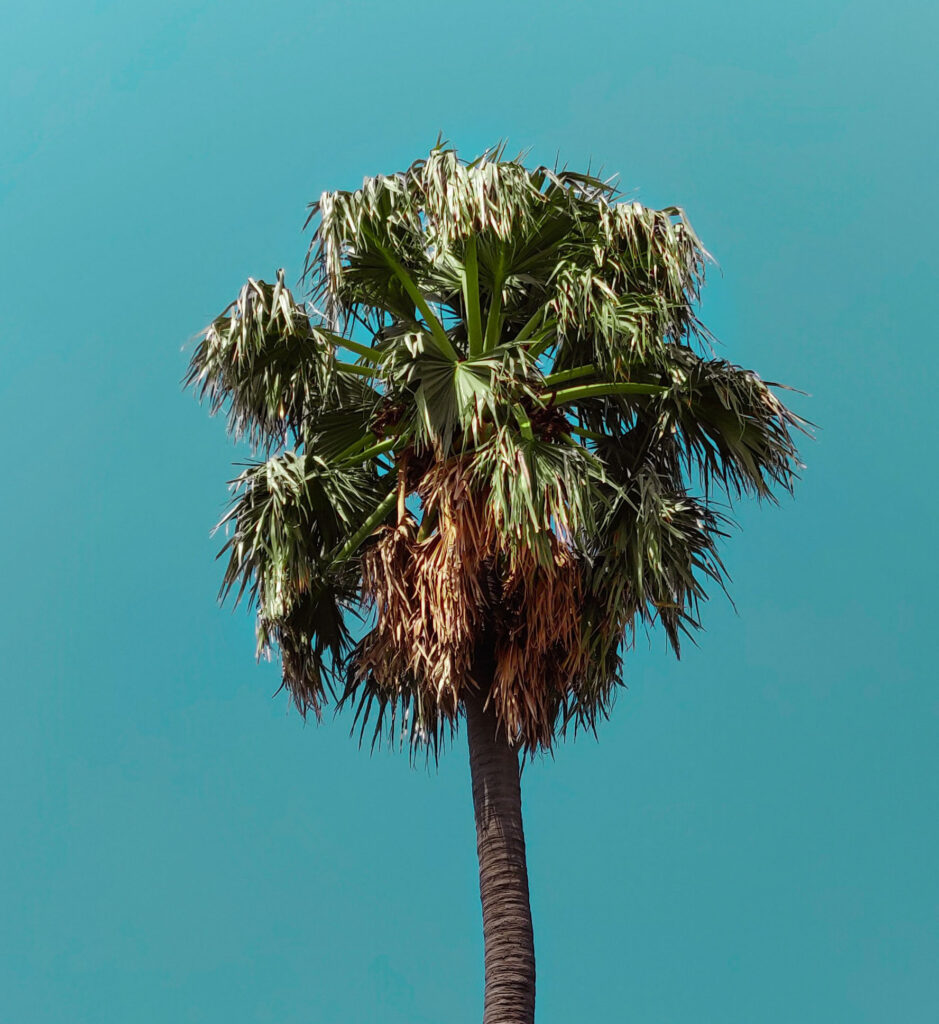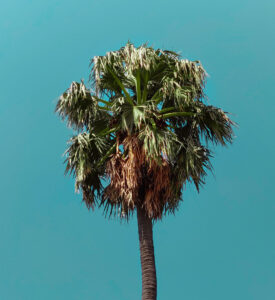Don’t scalp your palm trees

 Over-trimmed palms are mighty laughable. You may have identified these scalped palms by their feather-duster tops or tufts. Some may think it’s an acceptable new style.
Over-trimmed palms are mighty laughable. You may have identified these scalped palms by their feather-duster tops or tufts. Some may think it’s an acceptable new style.
But the natives know better.
It’s more than aesthetics. The palms are suffering.
“It is painful to see palms trimmed up to only 6-8 fronds,” says Jo Leyte-Vidal, an eighteen-year veteran and instructor of Master Gardeners.
“The green fronds are the food source for the plant. This weakens the palm, making it more susceptible to diseases,” Leyte-Vidal said.
Not only that, but the tree is also now more vulnerable to insects. And it can take several years for a palm to recover from an over-pruning.
Examine the “stalk” where the leaf connects to the tree. Fronds growing upward or sideways should stay on the tree. Only fronds that are dead or more than half-dead leaves should come off—if at all.
Palms may not require any trimming. Notice palms in the wild. If you are like me, you probably enjoy the graceful teardrop shape formed by the dead leaves that hang along the trunk, especially in the very tallest Washingtonia Palms. Now envision the Canary Island Date Palms with their flouncy tutu shape. I call these the “dancing palms.” Why ruin God’s art?
As an old-timer and native Floridian, I can attest that the “hurricane cut” was not a “thing” until recent years. And I’ve never heard of anybody getting slaughtered by a palm leaf in the middle of a hurricane. (Except for the weatherman.) I can imagine, though, it might be like getting hit by a flattened cardboard box.
Use common sense, though. Trim above sidewalks where fronds could fall on peoples’ heads.
Wasps love to make nests in palm leaves, whether green or brown, so watch out. Consider working during the evening when the little devils are more settled.
Lop off clusters of fruit that would clutter up your sidewalk. Squished fruit and seeds can cause slipping and sliding.
Palms scatter ripe fruit below the tree where seedlings spring up like sturdy blades of grass. (Pull them while they’re tiny to keep life easy.)
But there’s a bonus to all this. Jelly palms (also known as the butia or pindo palms) are famous for their sweet peach-colored fruits. When they drop, send the kids out to pick them up so you can make a delicious jelly. This pithy fruit’s flavor resembles a mix of pineapple and strawberry. But make sure you have verified your palm is a pindo. Its long bluish-green leaf has a distinctive side-curve to its feather-life leaf.
Now, as a savvy Floridian, when you’re out and about, observe the different shapes of palm leaves. Once you see the differences, you’ll become an enthusiast. Your friends will wonder how you can tell the trees apart. Commit yourself to identify at least a few of the more common species mentioned in this article, the pindos, Canary Islands, Washingtonias.
But at the very least, learn to spot and treasure our state tree—the sabal, or cabbage palm with its shaggy round top of hand-shaped fronds. The tallest, like ancient sentries, stand high above the woods, and proudly represent us.
Sadly, a variety of palm diseases have attacked our trees, such as lethal bronzing, bud rot, and blights. But don’t worry. Be informed. Some problems are simply nutritional. Questions? Call your Marion County Extension office at 352-671-8400.
Whatever your situation, don’t let a saw-happy tree-trimmer destroy your palms. Learn to identify and appreciate our local species. And above all, don’t run off the road while you’re out there scanning the roadways for them.
Visit https://hort.ifas.ufl.edu/woody/palm-pruning.shtml to see examples of proper palm pruning.
Jennifer Odom is an avid gardener and an Ocala-based author. Her latest novel “Girl with a Black Soul” was recently released. For information visit jenniferodom.com





